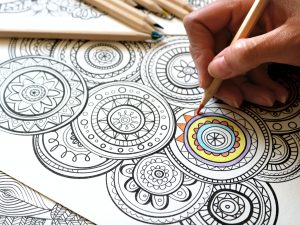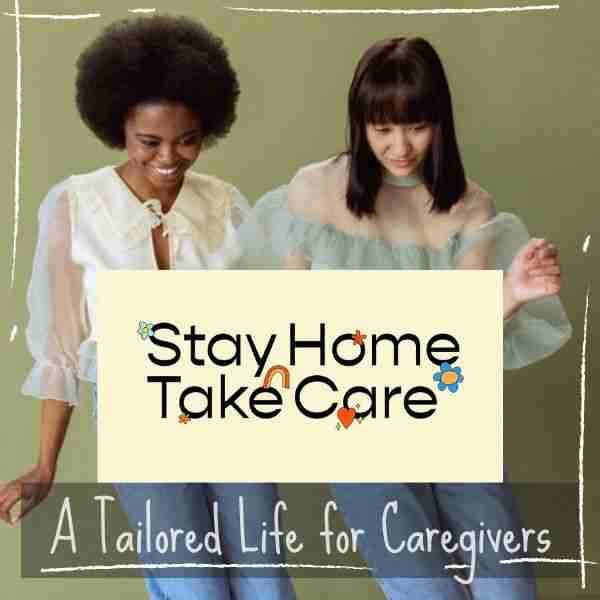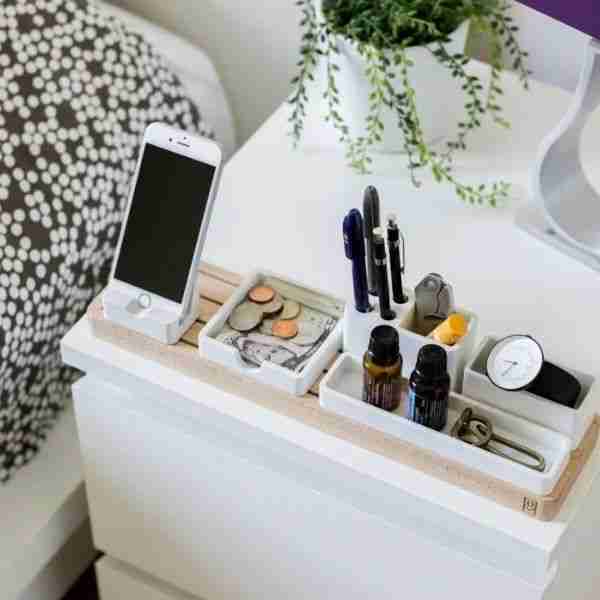
My introduction to self-care with art
A group of twenty-five new staff was introduced to every department of the hospital and mental health care facility. The training required for my new position in healthcare was two weeks of so much information that it was mind-numbing.
Our training room, a space made for a group half that size, was cozy. A group of twenty-five in a modest size space can generate heat throughout the day, especially in sunny July.
In these close and warm quarters, I was introduced to adult coloring. One day during a lunch break, I noticed a woman working quietly on a paper filled with color. When asked about her activity, she explained that her work as a clinical social worker had two sides, a light, and a heavy side. Self-care with art was a way to express herself. I was used to writing my way to healing. But this was an exciting alternative activity.
As a social worker, she was a professional caregiver for families in need. Families, who were often in crisis, were paired with services ranging from stable housing to therapy to regular health care, and child care and educational resources. She explained that it was very rewarding, fueling her desire to serve as a caregiver; but, there was a trade-off.
The other side of clinical social work is not taking home the stress. A family dealing with violence, substance abuse, or a mental health diagnosis has stress. As a professional caregiver, the worker may feel satisfaction with helping to improve some aspect of life for a family in crisis. However, there can also be a feeling of guilt if the family’s needs can not be met. Presumably, it is a challenge not to bond with a family after getting to know its members.
Another very real emotion for the social worker is anxiety. Families with small children add another layer of anxiety because if parents are leaving children in a home with illegal or harmful activities children can be hurt or worse. The fluid and unexpected lives of families in crisis can make you take a look at your own familial situation.

As a mother, the clinical social worker explained that she did not want to take stress or anxiety home to her family. Coloring, she said, helped her to decompress and refocus. Based on the vibrant and beautiful colors placed on the abstract pattern, the strategy works. Being creative with art can help you to quietly decompress and gently dissolve anxiety.
Purple, fuschia, blue, and yellow, is one of my favorite color combinations when I create. Self-care with art, such as Adult coloring has benefits for those that take the time to use markers, colored pencils or paint to create a beautiful picture.
Benefits of Adult Coloring
You can ease away stress or anxiety with as little as five minutes of self-care with art during the day. It is so important that we give ourselves permission to pause. Another benefit of coloring is mental relaxation. I enjoy coloring midday. It helps me organize my thoughts. Coloring before bed allows the amygdala (frontal part of the brain) to relax and reset. It is the reset that helps to provide a better night’s sleep and in turn improved motor skills the following morning.

1. Decide on the best time of day to enjoy being creative through self-care with art. Whether during lunchtime or after dinner or before bed, select a time to join a relaxing activity into your schedule of taking care of others. While working in healthcare, I found coloring with the clients was beneficial for myself and the client. Currently, I color during lunchtime. Midday coloring is an active process and it helps my mood.
2. Create your own collection of coloring books with prints that peak your interest. I like paisley and abstract pages to color because they remind me of fabrics. The colors you select speak to your mood. Do you feel stress or anxiety? Driving through rush hour traffic heading to work in the morning can be stressful. Try pairing a cup of coffee or tea with a few minutes of coloring. There are apps that offer coloring pages some are free or with a membership fee.
Adult coloring can be a tool for self-care. I have pulled out my colored pencils and coloring book while waiting on hold with customer service. A five-minute hold on the phone line with elevator music can either help calm or heighten emotions. When you enter a conversation in control of your emotions you can avoid negative outcomes.

3. Take note of the colors that you gravitate towards. My favorite color combination is purple, fuchsia, blue, and yellow.
https://www.realsimple.com/health/mind-mood/favorite-color
Max Luscher’s Color Quiz provides an interesting perspective on mood, personality, and emotions. The quiz is quick and easy. First, you select colors one-by-one until you have selected all 8 colors. You take a 30-second break and then take the quiz again.
Happy Creating!
*This post contains affiliate links. I only recommend products I would use myself and all opinions expressed here are our own. If you use these links to buy something, I may earn a small commission at no additional cost to you to help support this site. Thanks.
Previous: Write your way to healing


